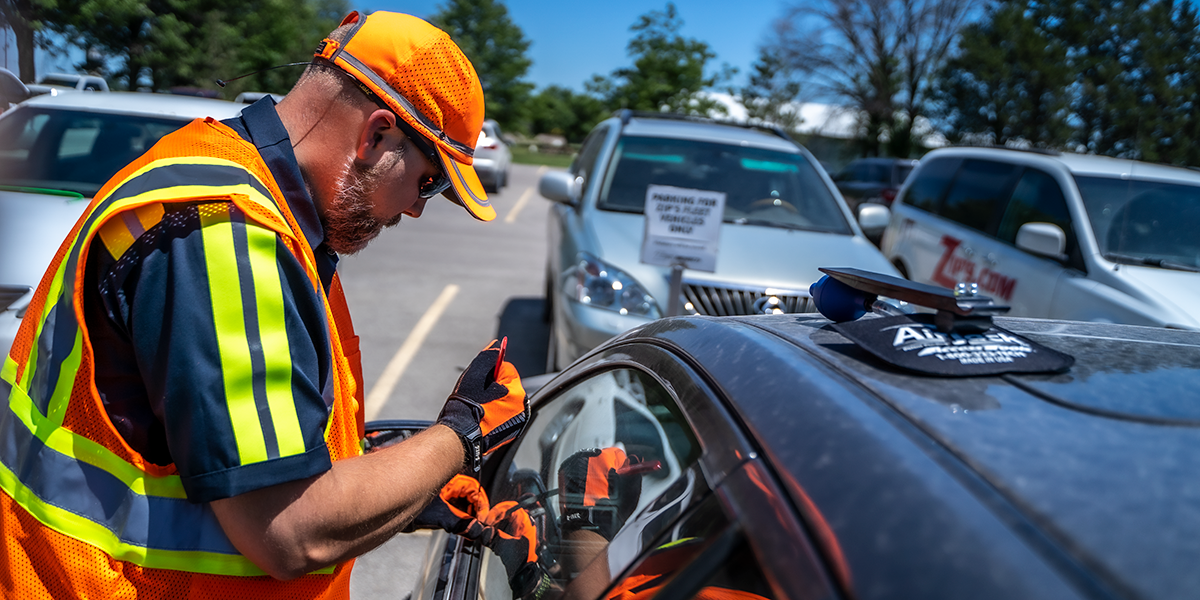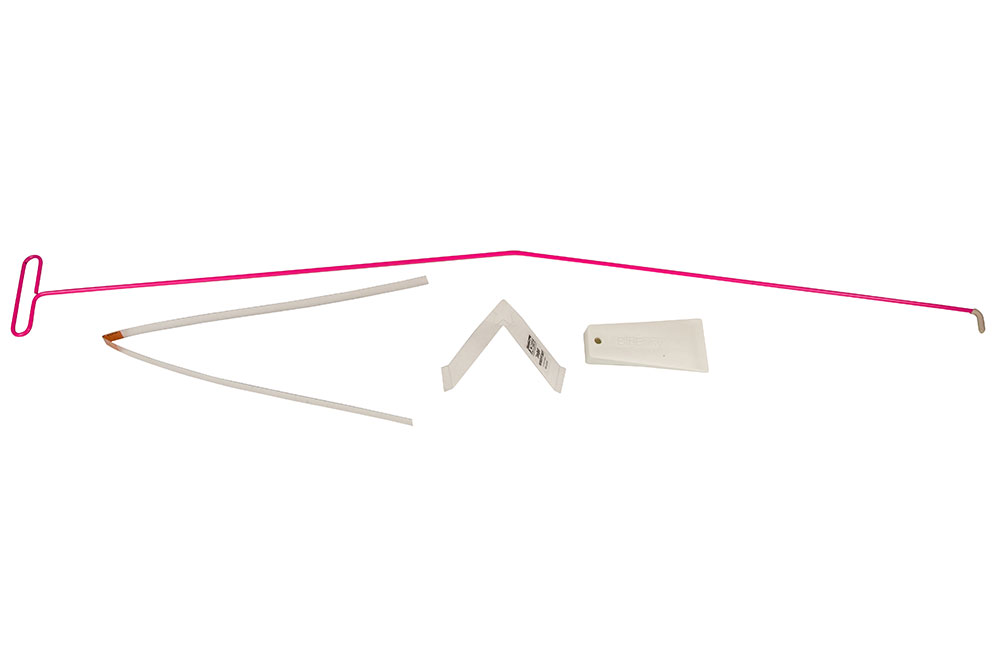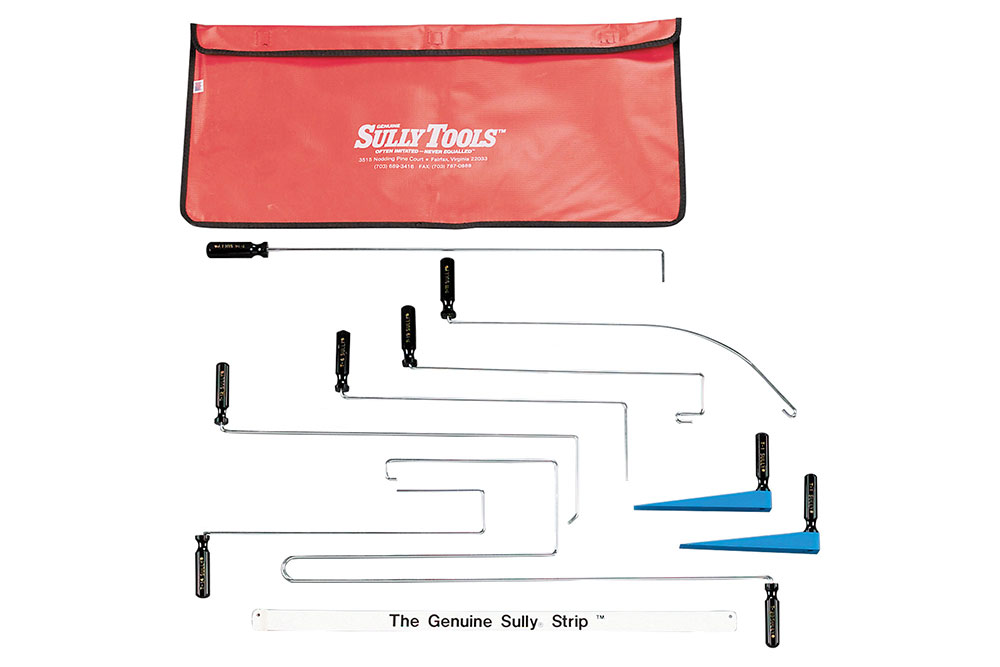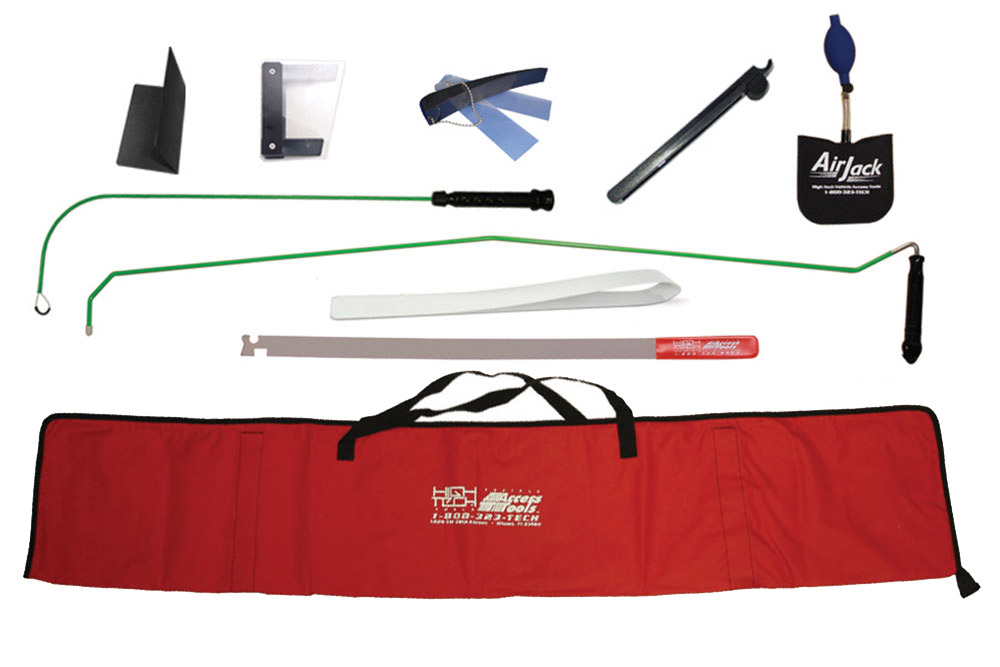by
Nate Kuennen
| Jul 08, 2022

Doesn’t matter who locked the keys inside the car. What matters is what you’re going to do to get them out. Zip’s AW Direct offers several car-opening kits to help automotive professionals gain access to locked vehicles.
In today’s blog, we’re going to look at some of our best-selling kits from different manufacturers. We’ll start with basic packages and finish with the most comprehensive kits, going over each lockout kit contents. Each one brings its own value, price-point and distinct lockout advantages.
Steck’s BigEasy Door Tool Kit See Details

(1) 4-1/2' L long reach tool
(1) Glow-in-the-dark tip
(1) Window wedge
(1) Paint protector
(1) Lock knob plastic strip tool
Steck's BigEasy door tool kit includes a fluorescent pink long reach tool with glow-in-the-dark properties. This allows for better visibility in low-light situations. Featuring a T-handle for better maneuvering, the long reach tool will appear white in the daylight and then bright pink at night.
This kit also features a window wedge and other essential accessories for most unlock scenarios. With customer service in mind, the paint protector, rubber tip and plastic strip all combine to prevent unwanted scratches to the vehicle.
AW Direct Big Blue Long-Reach Door Tool Kit See Details

(1) Rigid plastic window wedge
(1) Long reach door tool
(1) Protective rubber tip
(1) Inflatable air wedge
(1) Carrying case
This convenient door tool kit from AW Direct includes a zippered, black carrying case so your tools will stay organized, stay together, will be easy to transport and will be ready to go to work when you need them.
Similar to Steck’s BigEasy offering, this kit also features several properties to protect your customer’s vehicle. The inflatable air wedge won’t scratch windows or paint, and the rubber tip on the end of the long reach
tool will soften any button or lever action.
Pro-Lok 4 Piece Extra Length Long Arm Lockout Kit See Details

(1) Extra Long Arm tool
(1) Plastic sleeve
(1) Pump wedge
(1) Mini rubber wedge
By now, we’ve established the importance of protecting your customer’s vehicle and finish with soft air wedges, plastic paint protectors and rubber rod tips. What makes this four-piece kit from Pro-Lok different from
the first two is the additional length of the long reach tool.
At 76”, the Extra Long Arm tool is nearly two feet longer than the standard 4-1/2' long reach tool. Most of these door tools work alongside the window to reach door control buttons. With Pro-Lok’s kit, you now have
the ability to reach across the vehicle’s interior.
With a direct line of sight, you can easily position the long reach tool to depress the unlock button, access the pull handle, lift the lock button and even retrieve the keys. With this improved viewing angle, the only better position
would be from inside the vehicle.
Sully Tools Basic Door Tool Kit See Details

(1) Sully Pouch carry case
(1) Sully Strip
(2) Handle Wedges
(1 ) Sticky L
(1) Sully J
(1) Sully Big Foot
(1) Sully Dipper
(1) Sully L
(1) Sully
Drop Hook
(1) Sully Double Dipper
Unlike the first three kits, Sully Tools’ Basic Door Tool Kit gives us our first look at In The Door tools, a separate category at Zips.com. The previous kits just featured long reach tools, which work well between
the door frame and window weatherstripping to access the door controls.
With In The Door tools, the pre-bent rods are inserted into the door cavity and, through careful manipulation, emerge on the inside of the window. The plated shafts are able to hold their shape but remain flexible enough
to bend and form to the contour of the door.
When using these tools, auto entry experts use extreme caution to avoid damage to internal door components and also use the Sully strips to prevent scratches on the glass surface. Each tool number is stamped on the handle
for easy identification and replacement.
Access Tools Contractor's Lockout Kit See Details

(1) Wonder shield
(1) Glassman tool
(1) Wedgee wedge with strip savers
(1) Standard one-hand jack tool
(1) Air Jack wedge
(1) Button Master tool
(1) Button Strip tool
(1) Quick Max
long reach tool
(1) Slim Jim
(1) Carrying case
The Contractor’s Lockout Kit from Access Tools is the most popular and best-selling kit at Zips.com. Complete with a soft-sided carrying case to keep everything together, this kit offers several wedge options
as well as unique tools for door pulls and unlock buttons.
At 24-1/2", the Slim Jim tool included in this professional kit is made from stainless steel for added firmness, corrosion resistance and durability. As its name implies, the thin profile slides into the door cavity
to reach door linkages for simple opening of any vehicle.
Access Tools’ contractor kit also includes two options to reach the door lock knob. The Button Strip was designed for insertion into narrow gaps for grabbing vertical buttons, and with its handle-operated
lasso, the Button Master was specifically created to pull up knobs.
Save your customer’s day
Unintentionally locking keys in a vehicle can be an embarrassing moment for your customers and cause unnecessary delays in their busy lives. Be a hero and come to their rescue with the right lockout tools from Zip’s
AW Direct.
Our rundown today of five different types of lockout kits should give you an idea of what you’ll need to respond to your next dispatch. If you don’t get a lot of those calls, a basic set may be right
for you. However, if you handle a lot of them, consider a more comprehensive kit.
Several more options are available at Zips.com. Click on the ‘Shop Products’ tab on the top navigation bar and then scroll down to Lockout Tools. Here, you’ll discover more kits and individual
tools in a number of different categories.
Find the options that are right for your operation. We also sell how-to manuals and include instructional videos on our product detail pages. These resources will come in handy the next time you head out to a lockout
call.